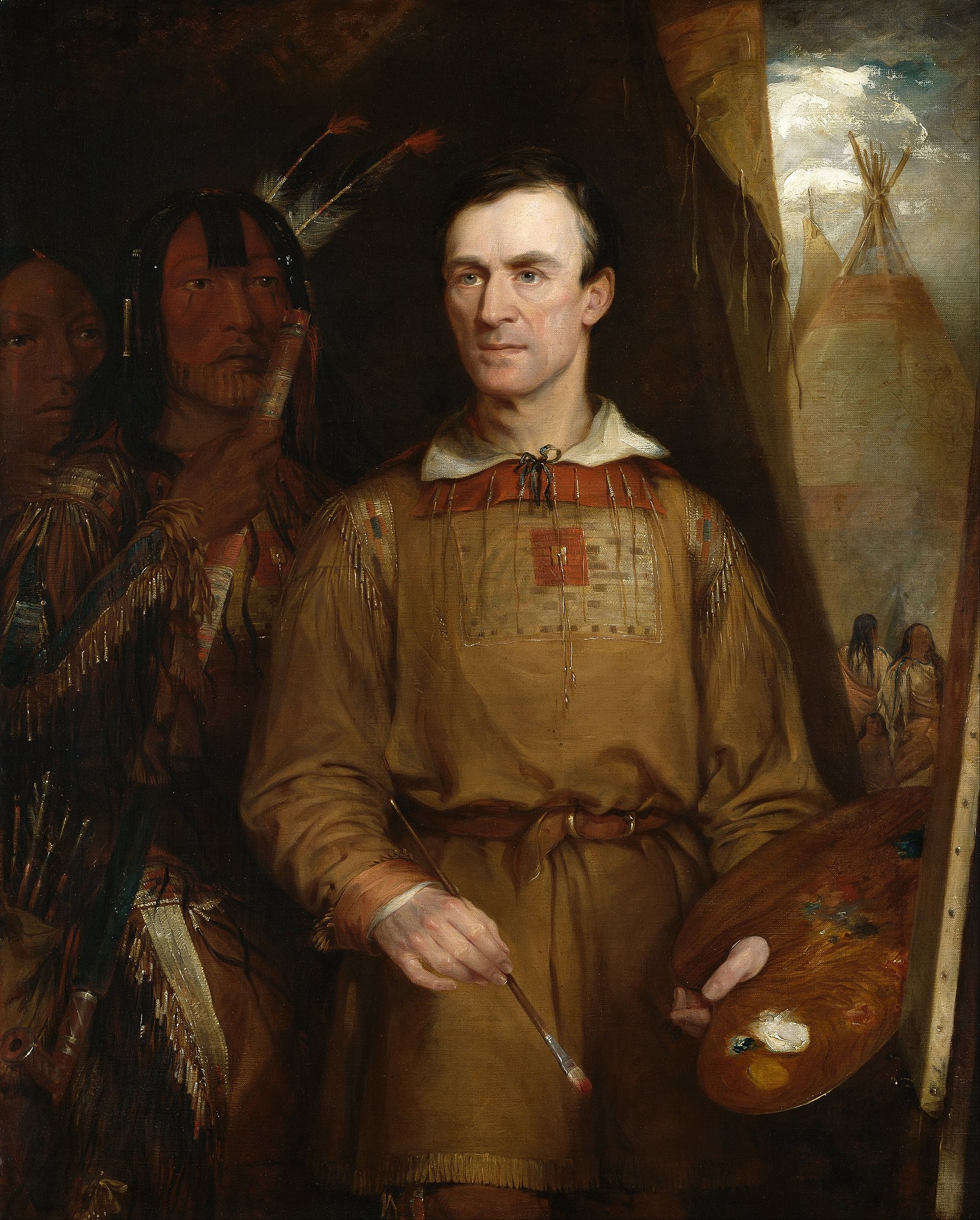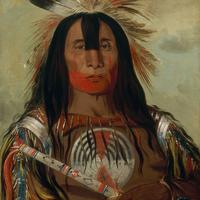More about George Catlin
Works by George Catlin

Contributor
George Catlin introduced millions of people to unique and striking images of indigenous North Americans.
However, his work did not establish that the indigenous person of the Americas is not a spectacle, nor a racial oddity, but a member of a sovereign nation, the kinship connections of which form the human counterpart to the earth. Whereas ideas from Europe have attempted to divide nations into races based on physical and social types, indigenous peoples did not originally distinguish between nation and race. This is the understanding of Al Logan Slagle, tsigesv, former council representative of the Keetoowah people. If Slagle could sit face-to-face with the great George Catlin, the first European to paint images of the Plains peoples, how could he begin to convince him of these facts?
The most difficult aspect, in terms of emphasizing to Catlin that these peoples belong to sovereign nations, not simply a "noble and doomed race," would be that Catlin idealized, romanticized and fetishized the physiques of the indigenous peoples, in much the same way that the brilliantly sinister Leni Riefenstahl, free and apparently shameless, would fetishize the appearances of the Nuba people a century later. Riefenstahl, having realized that her Nazism may have been a bad career move, later held hands with the "last of the" Nuba people, praising their bodies as she had praised the "German body" in her propaganda films in the 1930s.
Similarly, Catlin's exhaustive diaries, bizarrely, balance the supposed certainty of the indigenous peoples' imminent extinction with a sensualized and obsessive form of pity marked by placing the indigenous ways and bodies above those of the European: "Their [physical] forms are generally very perfect and handsomely proportioned, much more so than those of any civilized people, owing chiefly to the fact that they are so constantly exercising their naked limbs in the open air."
Catlin's writing repeats, as a kind of chorus, the notion of a stark distinction between "red" peoples and "civilized" peoples, to the extent that it proposes a technique of breathing supposedly common to indigenous peoples, which is the secret to their superior vitality. He introduces his observations regarding the relatively catastrophic levels of maternal and infant disease among Europeans with the following:
I have devoted the greater part of my life in visiting and recording the looks of the various native Races of N. & South America; and during these researches, observing the healthy condition and physical perfection of these people, in their primitive state, as contrasted with the deplorable mortality--the numerous disease and deformities, in civilized communities, I have been led to search for, and able, I believe, to discover, the main causes leading to such different results.
Despite his theory of the medical and cultural superiority of the indigenous peoples, due to such factors as their infants sleeping with mouths closed instead of open, Catlin's fame, prominence and prestige are due primarily to his desire to paint the indigenous as single subjects in the style of a European portrait, separate from community and earth, thereby "civilizing" them by extracting them from their environments and making their national regalia into fashion rather than sovereign representation.
Alongside the aesthetic genius of the "Renaissance Man" Catlin, in both writing and painting, the resonant lessons of his work are encoded in the ways of the peoples. These are the ways of relating to one another outside of the frame of the portrait, the ways which current anthropologists are barely beginning to record. Catlin's greatest work, for example, may be the portrait of the chief of the Kainai people, who speak the Blackfoot language, which, like Keetoowah, has no Indo-European '"sex" gender syntax (he-she-it),' but does have a grammatical distinction between animate and inanimate subjects. By abstracting the portrayal of the chief from his spiritual ties to the Blackfoot Sun Dances, which "require a respected woman to vow service as high priestess," insofar as the woman serves as a mediator between the community and the divine, Catlin conjured the pose of the European nobleman, erasing the matriarchal character of the chief's actual life.
Catlin rarely called his subjects "peoples"--he preferred "red man," ignoring the balanced relationship between male and female that made possible the survival of the people for millennia, even if the term "man" included the woman and child, in his language. Like Thomas Jefferson, he was certain that his work would be essential to preserving an accurate memory of a race that would inevitably and quickly cease to exist. Thanks to the devotion and trust of the sovereign first nations, he was wrong.
Sources
- Catlin, George. The Breath of Life or mal-Respiration and its effects upon the enjoyment & life of man. London: Trübner & Co., 1862.
- Catlin, George. Letters and Notes on the Manner, Customs, and Condition of the North American Indians. London: Tilt and Bogue, 1842.
- Catlin, George. Life Among the Indians. London: Gall and Inglis, 1861.
- Kehoe, Alice B. "Blackfoot." In Encyclopedia of Sex and Gender, edited by Carol R. Ember and Melvin Ember, 334-344. Berlin/Heidelberg: Springer, 2003.
- Riefenstahl, Leni. Last of the Nuba. London: Collins Harvill, 1978.
- Slagle, Al Logan. Burning Phoenix. Tahlequah: Self-published, 1993.
- Wallace, Anthony F.C. Jefferson and the Indians. Cambridge: Harvard University Press, 2009.
Featured Content
Here is what Wikipedia says about George Catlin
George Catlin (/kætlɪn/ KAT-lin; July 26, 1796 – December 23, 1872) was an American lawyer, painter, author, and traveler, who specialized in portraits of Native Americans in the American frontier. Traveling to the American West five times during the 1830s, Catlin wrote about and painted portraits that depicted the life of the Plains Indians. His early work included engravings, drawn from nature, of sites along the route of the Erie Canal in New York State. Several of his renderings were published in one of the first printed books to use lithography, Cadwallader D. Colden's Memoir, Prepared at the Request of a Committee of the Common Council of the City of New York, and Presented to the Mayor of the City, at the Celebration of the Completion of the New York Canals, published in 1825, with early images of the City of Buffalo.
Check out the full Wikipedia article about George Catlin











